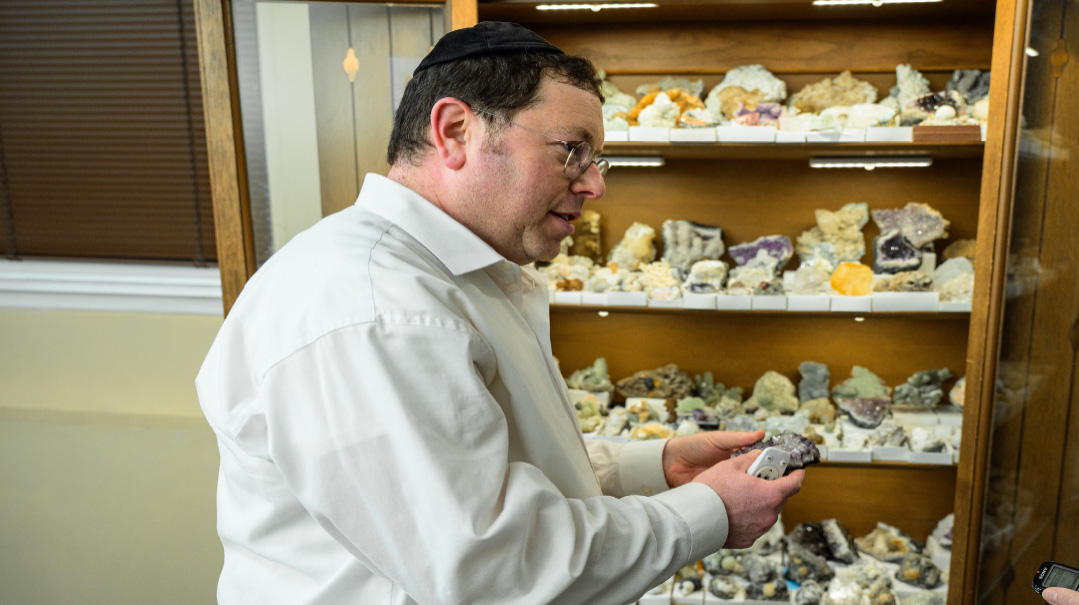Living Image

Eliezer Ben Hamu’s digital artistry brings ancient Kohanim to your screen
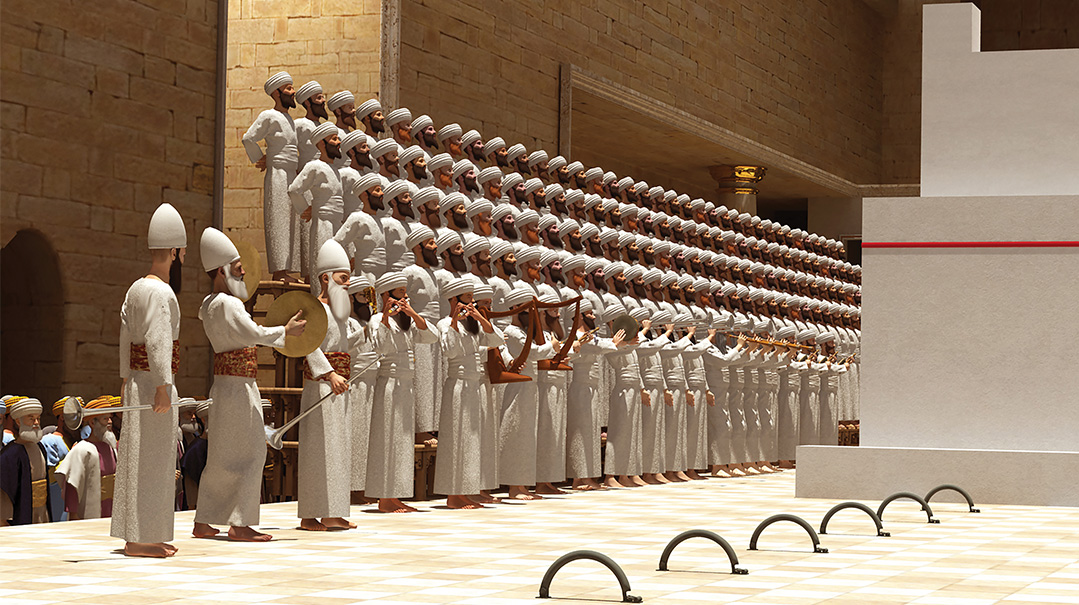
Photos: Itzik Blinitzky
HE became one of the biggest creators of 3D animation in Israel, creating simulators for Israel’s defense industries and even for the militaries of other countries. Until he began to dream of the protection of the Beis Hamikdash instead. Today, Reb Eliezer Ben Hamu’s photos and video images have become the face of the past and the hope for the future
If not for his desire to promote the study of everything related to the Beis Hamikdash, chances are Eliezer Ben Hamu would never have agreed to a media interview. This 52-year-old graphics and video whiz has been a dedicated mechanech for over three decades, and he’d still prefer to stay under the radar. He’s even had no problem giving the rights of his photos to other publications as long as it encourages people to learn. Yet despite his self-effacing nature, his 3D photos and video images have become the visualized face of the Beis Hamikdash for so many, and chances are you’re familiar with them too.
Ben Hamu, an Ashdod native, began teaching within the Chinuch Atzmai network more than 30 years ago as part of an arrangement with the IDF, where young men can teach in outlying areas or other qualifying schools in lieu of army service.
Ben Hamu was always looking for outlets with which to inspire his young charges. At first it was his music (he plays professionally in various public venues), and once he taught himself the rudiments of the specialized field of computer animation, especially 3D animation, it was a new frontier.
Over a period of a year and a half, he developed a fresh method for creating three-dimensional images. And then, when he met with someone who had developed a similar method, he realized that their pooled knowledge could create a superior product.
“This first partner of mine worked in a studio in Tel Aviv,” Ben Hamu relates. “I reduced my school work hours to the afternoons, where I taught computers and three-dimensional techniques, and my mornings were dedicated to developing the 3D work.”
Soon their work caught the eye of Israel’s military establishment. “We began doing imaging work for companies that sell products to both Israel’s defense industries and to the militaries of other countries,” he says. “These included air force simulators used by helicopter pilots and simulators for tanks and submarines.”
Around that time, he began to dabble in comics as well. Readers might recognize the classic Count of Coucy historical fiction series by Marcus Lehman, recently revamped and reprinted in comic form with stunning 3D images by Eliezer Ben Hamu.
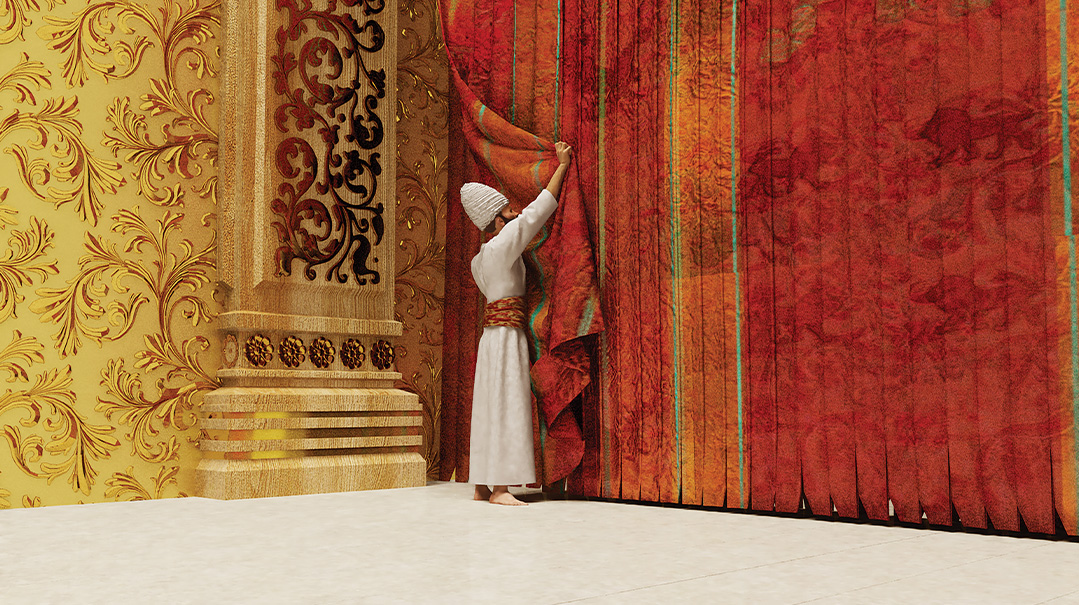
Prepare for Redemption
When Reb Eliezer Ben Hamu’s father passed away in 2006, right after the shivah he decided he wanted to embark on some kind of project in his father’s memory. “And then,” he says, “as if by chance, I came across the letter of the Chofetz Chaim to Rav Yosef Chaim Sonnenfeld, the rav of the Old Yishuv in Yerushalayim, about the obligation to learn the seder ha’avodah in the Beis Hamikdash as a preparation for the Geulah. I just knew this would be my calling.”
Ben Hamu got to work. The first thing he needed to do was study and study some more, starting with Maseches Middos and other sources in Chazal and the Rambam. He was aided by several talmidei chachamim, including Rav Daniel Maimon of Elad, an expert on the structure of the Beis Hamikdash. “It’s not easy to understand the subject, with so many shittos and such complex material involved,” he says.
Once Ben Hamu felt comfortable understanding the nuances of the Temple Service and all the jobs of the various klei Hamikdash, he joined up with Gal Edri, a Breslover chassid who is a top-tier animator, painter, graphic designer and videographer of virtual and augmented reality.
Ben Hamu knew what he wanted to do next: create a full-length animated educational video with exact and accurate details depicting in its full drama the avodah in the Beis Hamikdash. He became so busy with this new Beis Hamikdash project that he cut back on his time at the Tel Aviv studio. It happened to come at the same time that one of the simulations he prepared was shown on Shabbos. “This caused me a lot of distress,” he says, “because I had clearly stipulated that I wasn’t willing to partner on any projects that would be presented on Shabbos.”
Ben Hamu and his team had the know-how and the professionals, but there was still the question of funding. This film would be an expensive project, and he didn’t have the resources to back it on his own.
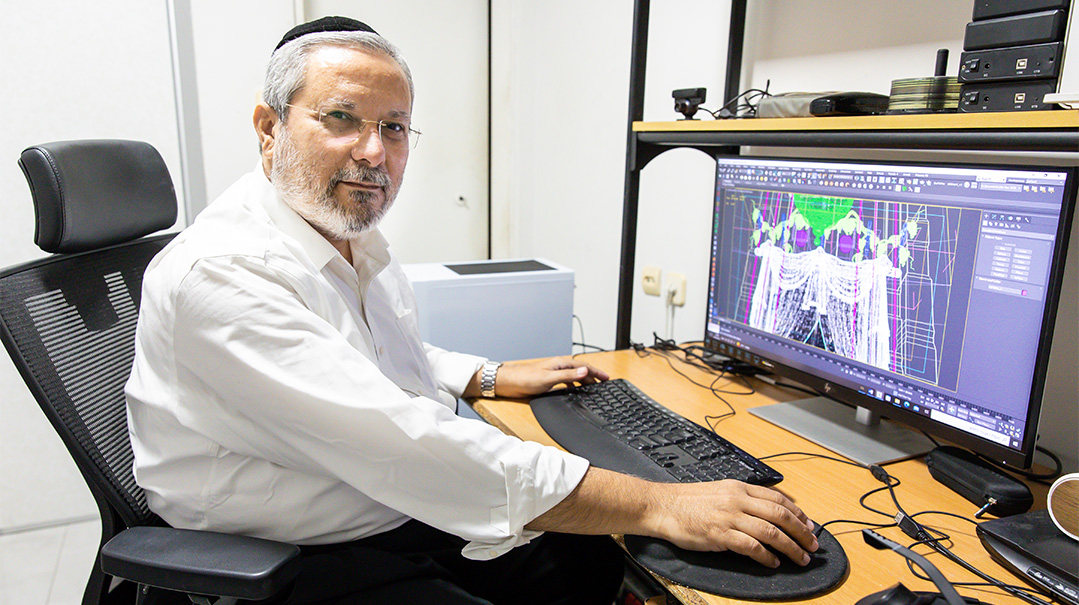
“When I came across the letter about learning the seder ha’avodah in the Beis Hamikdash as a preparation for the Geulah, I just knew this would be my calling.” With his lifelike Temple images, Eliezer Ben Hamu is doing his part
Meanwhile, Reb Eliezer Ben Hamu had a would-be client from overseas interested in paying top dollar for his images. All he’d have to do was click the Send button, and he’d have a nicely padded bank account.
But the client had a condition that knocked down the lucrative deal: He wanted “open” images, meaning that he would be able to add additional elements to them. Ben Hamu wanted to know why the developer wanted images that could still be altered, and the answer shocked him: “I sell souvenirs to Christians,” the client explained, “and I want to include in the catalogue photos from the Beis Hamikdash, which stood during the period when the founder of Christianity lived.”
Ben Hamu recoiled. “It was like asking me to create a bell that would summon people to church,” he says. But that wasn’t the end of the story. That evening, when he arrived at his regular evening kollel learning session in Ashdod, he told the story to his rosh kollel, who exclaimed that if he’d withstood such a test, there is no doubt that he would see financial blessings very soon.
And in fact, the very next day, Ben Hamu was presented with another proposal: An Ashdod-based businessman had decided to donate a large sum to create an instructive visual presentation to help hundreds of thousands of people learn the masechtos and sugyos in Shas that relate to the Beis Hamikdash, the klei Hamikdash and the service of the korbanos.
Ben Hamu’s team began with a presentation for Maseches Middos, whose five chapters describe every part of the Beis Hamikdash compound with full measurements of every section of the Mikdash. It took six computers, powerful processors, and several years to build the model and complete the project.
“We had to keep learning and asking and researching, making sure that every tiny specific detail was entirely accurate. Just a small point to illustrate what it entailed,” Ben Hamu explains: “There is a part that lasts for just seconds, depicting how the lamps in the Ezras Nashim of the Beis Hamikdash would illuminate the whole city of Jerusalem, in accordance with what is described in the Mishnayos of Maseches Succah. This part usually generated a lot of excitement in the audience, but people don’t realize that these short 14 seconds were produced by six computers over a period of two weeks.”
His creations help illustrate in a very vibrant way Maseches Middos, as well as other sugyos relating to the Beis Hamikdash in Masechtos Yoma and Succah. These life-like 3D images make it possible for those who learn these masechtos to actually see a life-like picture of the Beis Hamikdash structure and the service of the korbanos that went on inside.
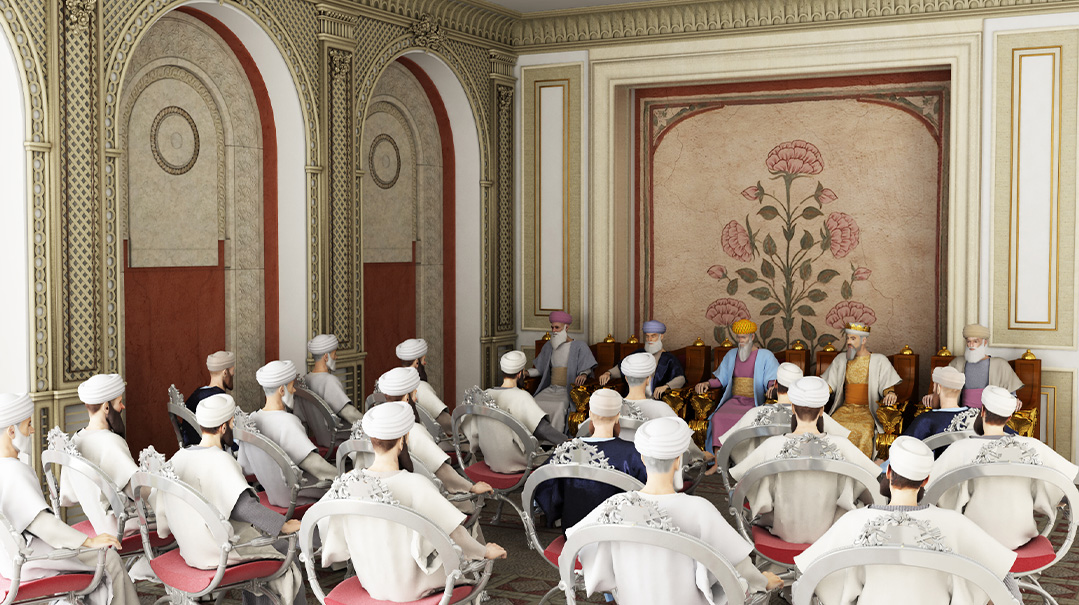
A Public Service
After a year and a half of work, the 45-minute-long production was finally finished; it’s a lively visual lesson in Maseches Middos, including short animated segments that cover how the Beis Hamikdash looked in its various parts: the lishkos, the azaros, the Mizbeiach, the ulam, the heichal and other sections.
“The feedback ranged from a total lack of familiarity to expertise that I didn’t expect to see,” Ben Hamu describes. “I once showed a screening at the Talmud Torah in the town of Mevo Choron. In one of the segments, you can see the thin ama-by-ama pieces of wood that were on the Mizbeiach. I asked the young viewers if they knew what this was, and they quickly answered. In contrast, in many kollelim, the avreichim would be hard-pressed to correctly define these wood squares.”
In addition to the animated video, Ben Hamu had also produced hundreds of photos of the Kohein Gadol in various stages of his avodah on Yom Kippur, as described in Maseches Yoma. And today, they’ve become his most popular trademark.
“I had the photos saved for five years, and then, during Covid, someone called me from the Kol Halashon network,” Ben Hamu says. “He offered to purchase all these photos together with the rights to them, which became the essential content of the sefer Maros Yoma.” It’s an incredible picture book with over 500 3D photos, which is of great benefit to daf yomi learners and the general public. Ben Hamu released the pictures essentially as a public service — the book doesn’t even mention his name. But for those who recognize his work, it does have his stamp.
“When I see an avreich in the beis medrash taking this sefer out of the bookcase in order to help him get through the masechta, it makes me feel amazing, even if he has no idea that it’s my work.
After that, with the help of the photos, Ben Hamu created a highly invested — and free — presentation about the seder avodah on Yom Kippur that is open to the wider public.
The next sefer in the series, Maros Succah, is also comprised of 3D photos, describing the avodah in the Beis Hamikdash on Succos: the nisuch hamayim water libation, the circling around the Mizbeiach of the aravos, Simchas Beis Hashoeivah, and more.
Then came the creation of a photo album for children that includes 375 photos of the Yom Kippur service. This kid-friendly album also includes collector cards and stickers.
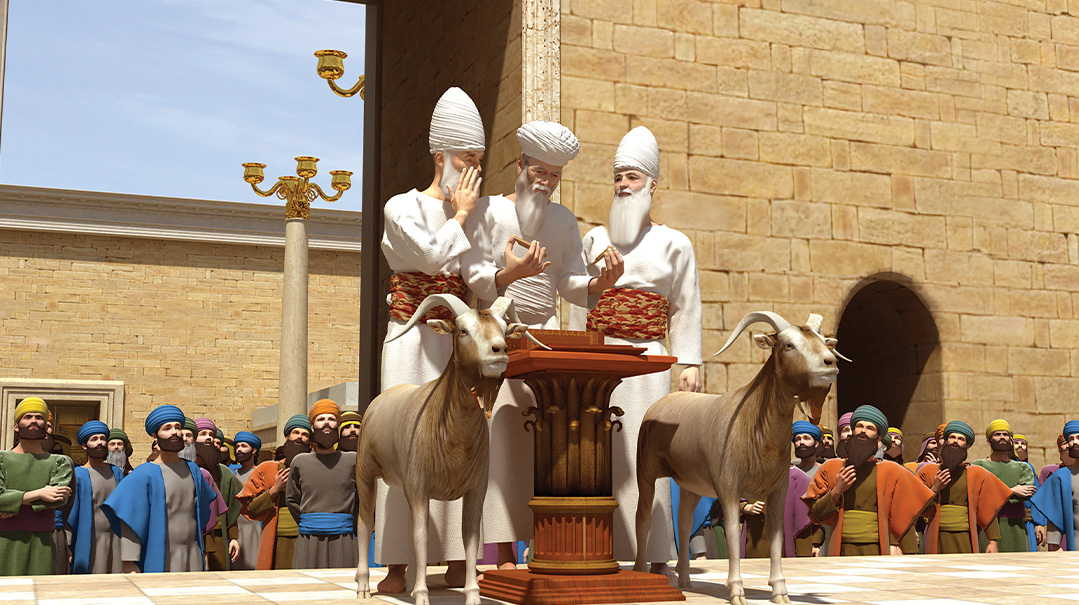
How did Ben Hamu decide what the Kohanim and the public actually looked like in the time of the Beis Hamikdash?
“Actually, every single detail in the production is a type of learning. The Bigdei Kehunah are described in both Chumash and in Mishnayos, and I got the inspiration to create the images of the simple people from extensive research into the various historical periods,” Ben Hamu explains. “I’ll just give a small example of how we know people wore cloaks: The Gemara brings a story of Rav Ashi, who came to King Menashe and asked him why he served avodah zarah. Menashe replied that had he lived in his generation, ‘he would have picked up the sleeves of his cloak and run to serve avodah zarah,’ so they certainly wore cloaks at that time.”
After viewing the 3D presentation on the Beis Hamikdash, it’s hard not to be captivated by scenes that we never imagined or experienced. Still, this excitement is not really Reb Eliezer’s goal at all.
“I have no interest in turning the Beis Hamikdash into an attraction and an experience, as spiritual as it may be,” he stresses. “My goal is to simplify these concepts and make the learning more accessible, so each person can understand Maseches Middos, Maseches Yuma and the service of the korbanos, just like the Chofetz Chaim wrote in his letter, and what the Lubavitcher Rebbe zy”a spoke about often: to engage in Hilchos Beis Habechirah. The attractions might bring hearts closer or excite high school students, but the goal is to learn.

Come Along for the Ride
Ben Hamu feels like he’s just getting started. “I still have lots of ideas in the pipeline. I very much want to illustrate the perek of Eizehu Mekoman shel Zevachim that we say in Shacharis. Many people have no idea what they’re saying, because the entire ritual of korbanos is so far removed from our daily lives. I’m also working on a show presenting how the Beis Hamikdash is the center of the world and the connection between all of the history of Am Yisrael to the Beis Hamikdash. I hope Klal Yisrael will come along with me for the ride. These years that I’ve been involved has generated intense yearnings to see the Beis Hamikdash in all its glory already. I long to see the Kohanim — the real ones and not animated figures — doing their avodas kodesh. I have no doubt that if we really, really realize what we lost when the Beis Hamikdash was destroyed, we would do much more to hasten its rebuilding.”
(Originally featured in Mishpacha, Issue 927)
Oops! We could not locate your form.



